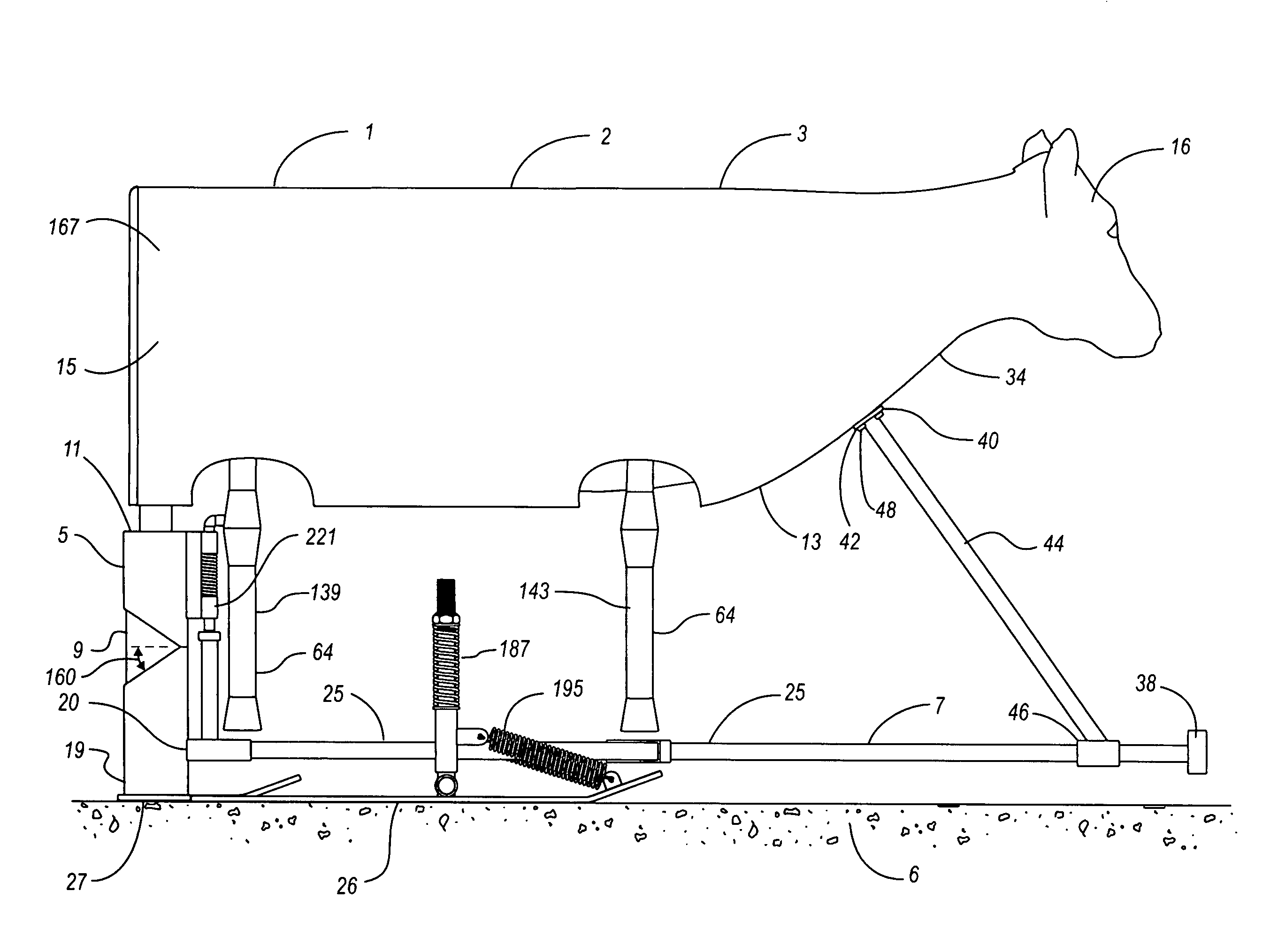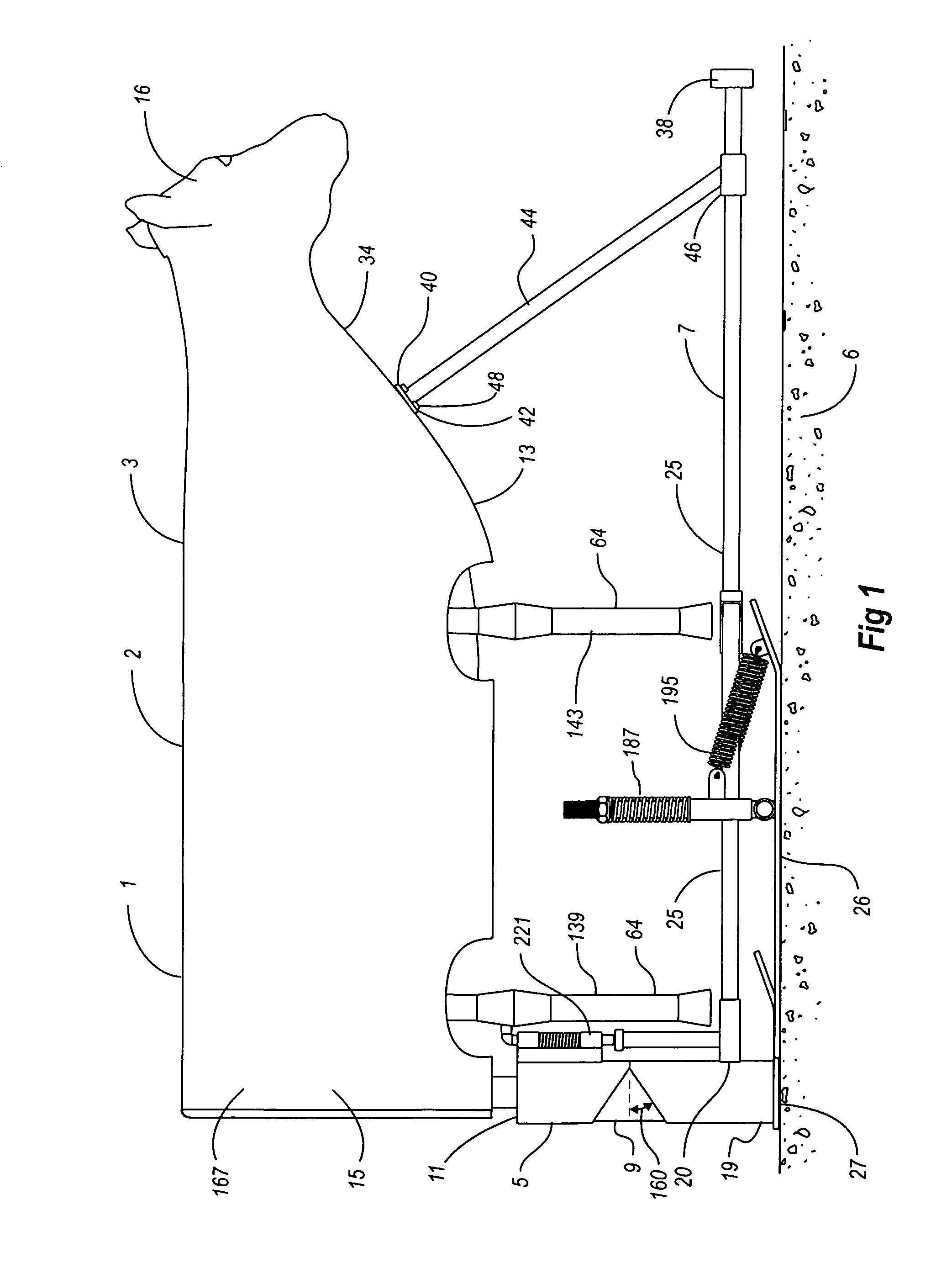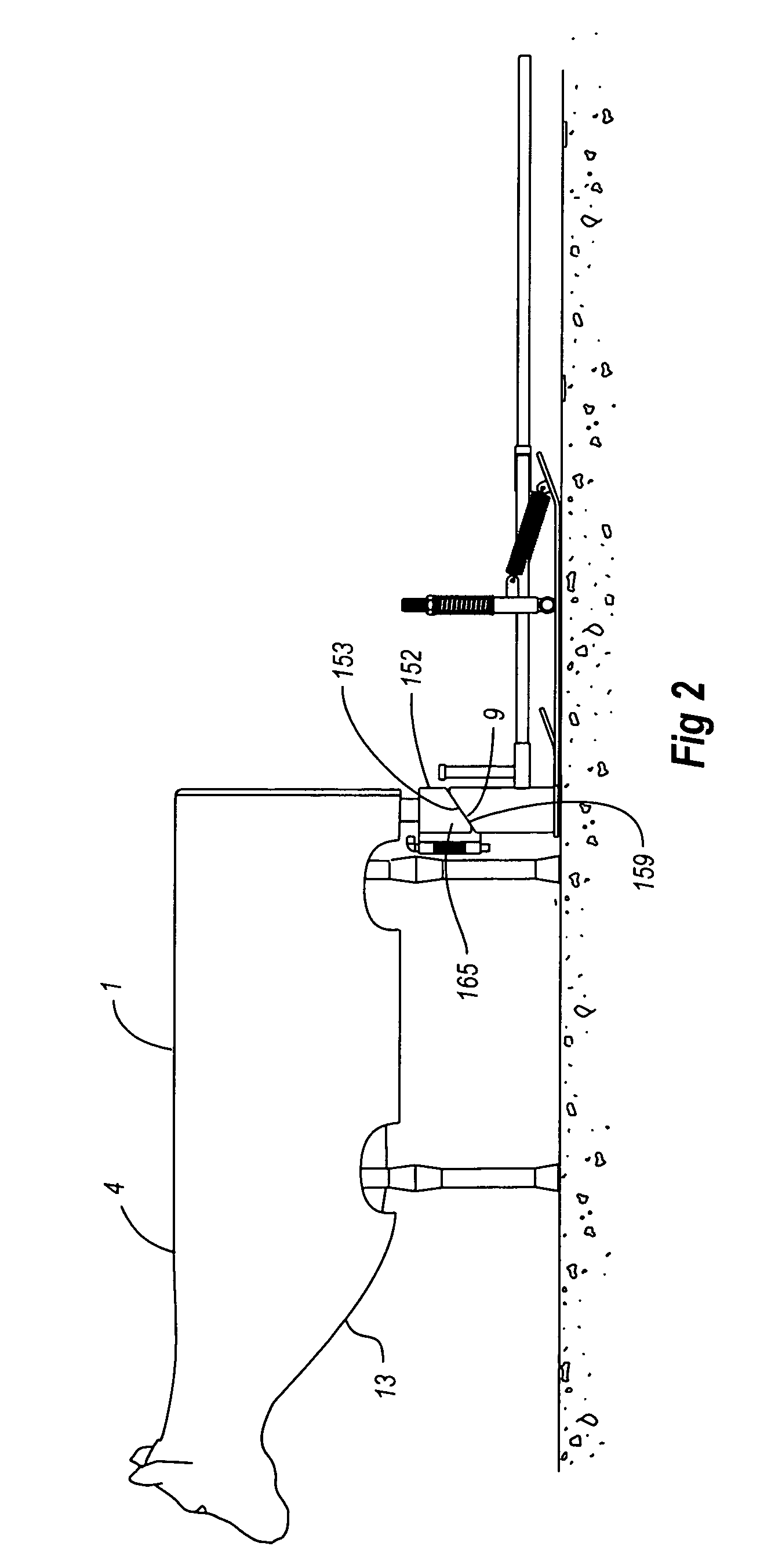Training apparatus for calf roping
a training apparatus and calf roping technology, applied in the field of calf roping training apparatus, can solve the problems of inability to provide adequate live animal practice, inability to develop and improve the skills of calf roping participants, and inability to achieve adequate practice repetitions
- Summary
- Abstract
- Description
- Claims
- Application Information
AI Technical Summary
Benefits of technology
Problems solved by technology
Method used
Image
Examples
Embodiment Construction
[0050]Referring first to FIG. 1 a preferred embodiment of the calf roping training apparatus 1 of the present invention in a forward configuration 2 is shown. The preferred embodiment shown comprises a simulated calf 3, a support column 5 and a towing structure 7. The support column incorporates two of the key features of the present invention, referred to in this application as the spin joint 9 and the invert joint 11. Referring also to FIG. 8, the calf body 13 of the simulated calf 3 is formed by one or more pieces of simulated skin 15 and a simulated head 16 fixed in anatomical form by a body frame 171. Referring also to FIG. 5 and FIG. 10, the support column 5 is anchored to the tow member end 20 of the tow member 25 of the towing structure 7. The support column base 19 is attached to a short skid 27 which provides for transfer of the weight of the simulated calf 3 to the ground 6. The support column extends upwardly from the short skid. Referring also to FIG. 3, the support col...
PUM
 Login to View More
Login to View More Abstract
Description
Claims
Application Information
 Login to View More
Login to View More - R&D
- Intellectual Property
- Life Sciences
- Materials
- Tech Scout
- Unparalleled Data Quality
- Higher Quality Content
- 60% Fewer Hallucinations
Browse by: Latest US Patents, China's latest patents, Technical Efficacy Thesaurus, Application Domain, Technology Topic, Popular Technical Reports.
© 2025 PatSnap. All rights reserved.Legal|Privacy policy|Modern Slavery Act Transparency Statement|Sitemap|About US| Contact US: help@patsnap.com



